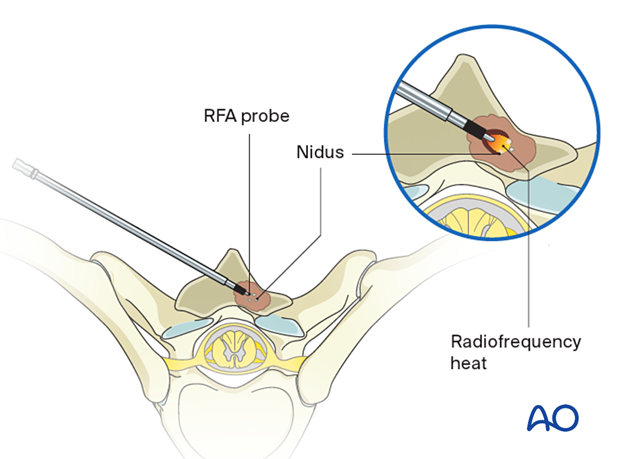Radiofrequency ablation
The emergence of thermal ablation has changed the treatment paradigm of osteoid osteomas.
Failure of this technique is as low as 5%. As such, a surgical curettage can be avoided in most cases.
The technique consists of inserting a probe percutaneously under CT guidance directly into the nidus of the tumor. This is usually performed by experienced musculoskeletal interventional radiologists.
Heat is then applied (90°C) for up to 4–6 minutes.
In the spine, there are concerns about the risk of thermal injury to the neural elements. As such, the absence of an intact cortex or close vicinity (<5 mm) is considered as a relative contraindication.
Surgery is considered when the risk of thermal ablation is considered too high, or after failed RFA. However, thermal protection techniques are being developed for these circumstances. These include epidural irrigation and air insufflation into the epidural space.

This picture shows a case of a T5 osteoid osteoma treated with CT-guided percutaneous radiofrequency ablation directly into the nidus of the tumor.
The response to treatment is assessed clinically. The classic nighttime pain should go away after successful treatment.














